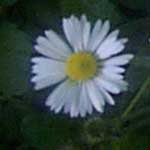Insectary Plants
Insectary plants attract insects for pollination in the garden. They are primarily made up of two plant families: Umbelliferae and Compositae. Compositae include: Daisies, Dandelion, Chrysanthemums, etc. and attract insects over a long period of time. Umbelliferae include: Yarrow, Earth Chestnut, Chervil, Angelica, Cilantro, and Parsley. They attract insects over a shorter period of time per blossom, but they produce more blossoms over time. Both of these plant families increase the productivity of the garden and increase the genetic diversity through cross-pollination.
Places/people/events that attract others from far away to learn about their community can be considered the insectary plants of our urban environments. Examples include: Bed & Breakfasts, symposiums, community gardens, mass transit, skill/shares, and workshops. People come together in these spaces and share. They provide the opportunity for the cross-pollination of ideas. Sharing with others enhances creativity and possibilities can be explored collectively. Working together can provide an effective method for implementing sustainable visions for our communities.
Home |
Permaculture |
Edible Flowers |
Events
Contact us
|


